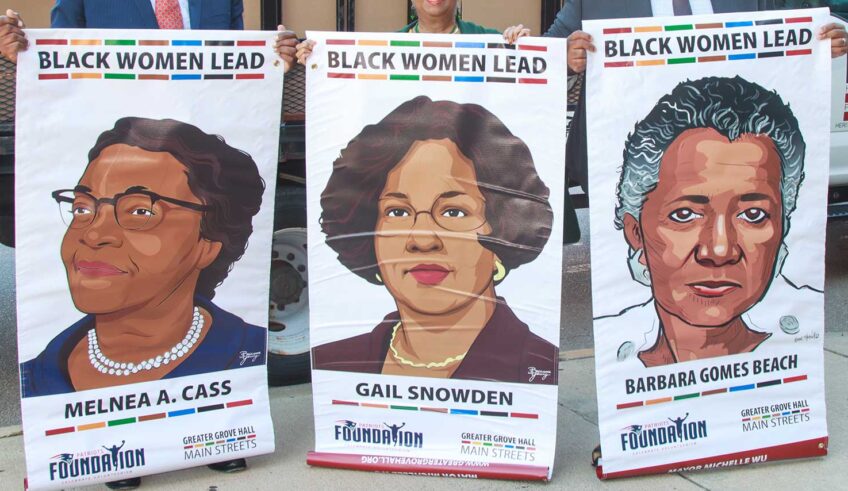Lyndon B. Johnson made history in two ways with his trouncing of GOP rival Barry Goldwater in the 1964 presidential election. The first is that he won a greater percent of the popular vote than any other presidential winner in more than a century. He scored nearly 500 electoral votes and carried every state except six. But therein lies the second history-making aspect of his victory: It was the states that he didn’t carry that reveal much about how the South became the white South again. Five of the six states Johnson lost were Louisiana, Mississippi, Alabama, Georgia and South Carolina. Johnson himself explained why in his now-famous quip that in ramming through the 1964 Civil Rights Act, the Democrats had “lost the South for a generation.” Johnson’s prescient remark wasn’t totally accurate, though: It has been more like two, almost three, generations since white Democrats lost their stranglehold on the South.
The ousting of three-term U.S. Sen. Mary Landrieu (D-Louisiana) from her seat in the U.S. Senate by U.S. Rep. Bill Cassidy (R-Louisiana) put the capper on the white Southern flip-flop from Democrat to Republican. Cassidy even found the words to punctuate that fact when he declared that his victory put “the exclamation point” on the GOP’s total dominance in the South. The South has no more white Democratic senators or governors, and the GOP controls nearly every Southern — and nearly every border-state — legislature.
The stock explanation for the white South’s political cartwheel is race. Whites, nearly all of whom were staunch Democrats before 1964, were so angry with Johnson and the Democrats for championing civil rights and voting rights that they were ripe for the GOP pickings. An astute Richard Nixon quickly picked up on this in 1968 with his “Southern strategy,” which meant, “Say little, and do less, about civil rights in the South.”
An even more astute Ronald Reagan launched his 1980 presidential campaign at the Neshoba County Fair near Philadelphia, Mississippi, which was a stone’s throw from where three civil-rights workers were murdered in 1964. Reagan nakedly pandered to whites’ not-so-latent racial hostility when he told a virtually lily-white, wildly enthusiastic throng at the fair, “I believe in states’ rights.” In the 1980s GOP political guru Lee Atwater kicked race baiting into even higher gear, dangling a generous blend of vicious anti-black stereotypes, code words and phrases and outright naked racial pitches that played on white racial fears. The GOP strategy firmly locked down the majority of the popular and electoral vote in the 11 old Confederate states and the border states. Together these states hold more than one third of the electoral votes needed to bag the White House.
But apart from race, there’s another explanation for the GOP’s lock on Southern whites that’s every bit as compelling. Goldwater, Nixon and Reagan never once uttered the word “race” in their campaign pitches to Southern whites. They took another tack. In his Mississippi speech Reagan punched all the familiar coded attack themes: big government, liberals, welfare, and law and order. The template was set for reshaping the white Southern political dynamic.
Fast-forward three decades. In 2012 GOP presidential contender Mitt Romney and running mate Paul Ryan picked their joint campaign starting point and their audience just as deliberately as Reagan did. This time it was a battleship draped in red, white, and blue, docked in Norfolk, Virginia. The virtually lily-white audience cheered as Romney and Ryan punched the same familiar coded themes: out-of-control spending and bloated government. They punctuated it with the hard vow to take back America.
Romney and Ryan didn’t openly champion states’ rights as Reagan did. Instead they updated the coded themes by lambasting Democrats, wasteful big government and runaway deficit spending on entitlement programs, launching a full-blown assault on the Affordable Care Act, Medicare, Medicaid, Social Security and labor unions. The majority of the recipients of these programs have always been white seniors, retirees, women and children, and white workers. But these programs have been artfully sold to many Americans as handouts to lazy, undeserving blacks, Hispanics and other minorities.
The final tallies in the 2008 and 2012 presidential elections gave ample warning of the potency of the GOP’s conservative white constituency. Obama made a major breakthrough by winning a significant percentage of votes from white independents and young white voters. Among white male voters in the South and the American heartland, though, Obama made almost no impact.
Among white voters in South Carolina and other Deep South states, the vote was even more lopsided against Obama. The only thing that made Obama’s showing respectable in those states was the record turnout of black voters and the record percentage of the black vote that he got.
Landrieu, like every other white Democrat in the South, lost her Senate reelection bid in part because of race and in part also because Obama, like every other Democratic presidential candidate since Nixon’s win in 1968, has been sold to white Southerners as the epitome of evil, big government. This is what made the white South the white South again, and the brutal reality is that it’s going to stay that way for a long time.
Earl Ofari Hutchinson is an author and political analyst.


![Banner [Virtual] Art Gallery](https://baystatebanner.com/wp-content/uploads/2024/04/Cagen-Luse_Men-at-store-e1713991226112-150x150.jpg)



